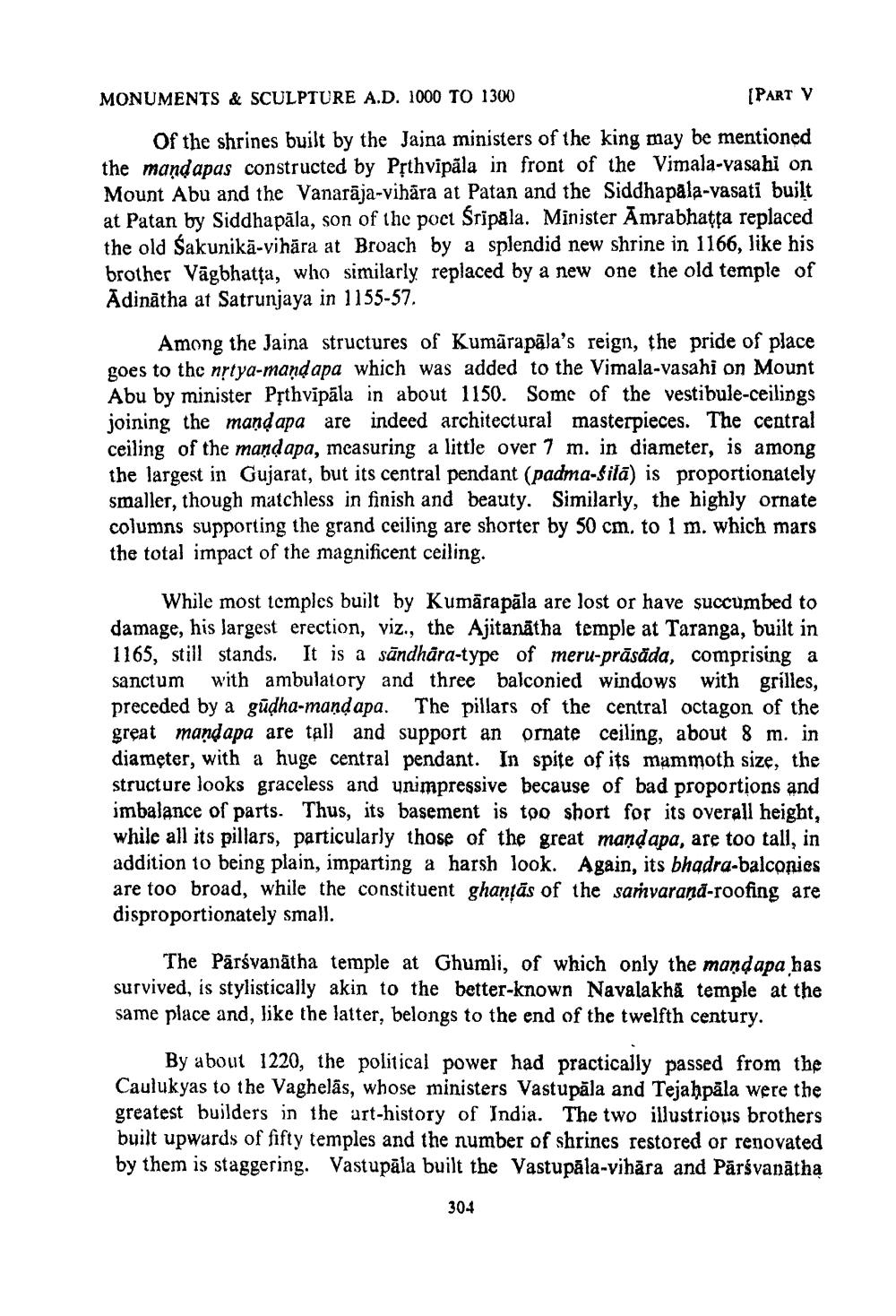________________
MONUMENTS & SCULPTURE A.D. 1000 TO 1300
(PART V
Of the shrines built by the Jajna ministers of the king may be mentioned the mand apas constructed by Prthvipāla in front of the Vimala-vasahi on Mount Abu and the Vanarāja-vihara at Patan and the Siddhapala-vasati built at Patan by Siddhapăla, son of the poct Sripala. Minister Amrabhatta replaced the old Sakunikā-vihära at Broach by a splendid new shrine in 1166, like his brother Vägbhatta, who similarly replaced by a new one the old temple of Ādinātha at Satrunjaya in 1155-57.
Among the Jaina structures of Kumārapāla's reign, the pride of place goes to the nștya-mand apa which was added to the Vimala-vasahi on Mount Abu by minister Pfthvipāla in about 1150. Some of the vestibule-ceilings joining the mand apa are indeed architectural masterpieces. The central ceiling of the mandapa, measuring a little over 7 m. in diameter, is among the largest in Gujarat, but its central pendant (padma-filā) is proportionately smaller, though matchless in finish and beauty. Similarly, the highly ornate columns supporting the grand ceiling are shorter by 50 cm. to 1 m. which mars the total impact of the magnificent ceiling.
While most temples built by Kumārapāla are lost or have succumbed to damage, his largest erection, viz., the Ajitanātha temple at Taranga, built in 1165, still stands. It is a sāndhāra-type of meru-prāsāda, comprising a sanctum with ambulatory and three balconied windows with grilles, preceded by a gūdha-mand apa. The pillars of the central octagon of the great mandapa are tall and support an ornate ceiling, about 8 m. in diameter, with a huge central pendant. In spite of its mammoth size, the structure looks graceless and unimpressive because of bad proportions and imbalance of parts. Thus, its basement is too short for its overall height, while all its pillars, particularly those of the great mand apa, are to addition to being plain, imparting a harsh look. Again, its bhadra-balconies are too broad, while the constituent ghantās of the sarvarand-roofing are disproportionately small.
The Pārsvanātha temple at Ghumli, of which only the mandapa has survived, is stylistically akin to the better known Navalakha temple at the same place and, like the latter, belongs to the end of the twelfth century.
By about 1220, the political power had practically passed from the Caulukyas to the Vaghelās, whose ministers Vastupāla and Tejahpāla were the greatest builders in the art-history of India. The two illustrious brothers built upwards of fifty temples and the number of shrines restored or renovated by them is staggering. Vastupāla built the Vastupāla-vihāra and Pārsvanātha
304




